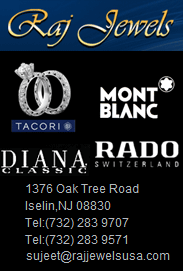|
|
|
|
|
|
Brussels formally, the Brussels Capital Region, is the capital city of the European Union and the largest urban area in Belgium. It should not be confused with the much smaller City of Brussels (founded circa 580) within it, which is the capital of Belgium (and Flanders) by law.
Brussels has grown from a 10th-century fortress town founded by Charlemagne's grandson into a metropolis of more than one million inhabitants. After the end of World War II, Brussels has been an important centre of international politics. It is often considered the de facto capital of the European Union, as it hosts the main EU institutions. The North Atlantic Treaty Organization (NATO) is also based in Brussels. Thus, it is the polyglot home of many international organisations, diplomats and civil servants. Brussels is the EU's third-richest city in terms of per capita income.
Although historically Dutch-speaking, Brussels has become increasingly francophone and today, a majority of its inhabitants are native French-speakers. Today, French and Dutch share official language status, reflecting the country as a whole. Brussels is the capital of Flanders and of the French Community of Belgium.
The name Brussels comes from the old Dutch Bruocsella, which means marsh (bruoc) and home (sella) or "home in the marsh".
The origin of the settlement that was to become Brussels lies in Saint Gaugericus' construction of a chapel on an island in the river Senne around 580.
The official founding of Brussels is usually situated around 979, because Duke Charles transferred the relics of Saint Gudula from Moorsel to the Saint Gaugericus chapel in Brussels, located on what would be called Saint Gaugericus Island. The Holy Roman Emperor Otto II gave the duchy of Lower Lotharingia to Charles, the banished son of King Louis IV of France in 977, who would construct the first permanent fortification in the city, doing so on that same island.
The county of Brussels was attributed to Lambert I of Leuven, count of Leuven around 1000. In 1047, his son Lambert II, Count of Leuven founded the Saint Gudula chapter.
Because of its location on the shores of the Senne on an important trade route between Bruges and Ghent, and Cologne, Brussels grew quite quickly; it became a commercial centre that rapidly extended towards the upper town (St. Michael and Gudula Cathedral, Coudenberg, Zavel area...), where there was a smaller risk of floods. As it grew to a population of around 30,000, the surrounding marshes were drained to allow for further expansion. The Counts of Leuven became Dukes of Brabant at about this time (1183/1184). In the 11th century, the city got its first walls.The Brussels-Capital Region is one of the three regions of Belgium, while the French Community of Belgium and the Flemish Community do exercise, each for their part, their cultural competencies on the territory of the region. French and Dutch are the official languages; most public services are bilingual (exceptions being education and a couple of others). The Capital Region is predominantly French-speaking - about 85-90% of the population are French-speakers (including migrants), and about 10-15% are Dutch-speakers. In January 2006, of its registered inhabitants, 73.1% are Belgian nationals, 4.1% French nationals, 12.0% other EU nationals (usually expressing themselves in either French or English), 4.0% Moroccan nationals, and 6.8% other non-EU nationals.
Brussels is served by Brussels Airport, located in the nearby Flemish municipality of Zaventem, and by the much smaller so-called Brussels South Charleroi Airport, located near Charleroi (Wallonia), some 50 km (30 mi) from Brussels. Brussels is also served by direct high-speed rail links: to Madrid by the Eurostar train via the Channel Tunnel (1hr 51 min); to Amsterdam, Stockholms and Cologne by the Thalys; and to Cologne and Frankfurt by the German ICE.
The Brussels Metro dates back to 1976, but underground lines known as premetro have been serviced by tramways since 1968. A comprehensive bus and tram network also covers the city.
Brussels also has its own port on the Brussels-Scheldt Maritime Canal located in the northwest of the city. The Brussels-Charleroi Canal connects the industrial areas of Wallonia.
An interticketing system means that a STIB/MIVB ticket holder can use the train or long-distance buses inside the city. The commuter services operated by De Lijn, TEC and SNCB/NMBS will in the next few years be augmented by a metropolitan RER rail network around Brussels.
Since 2003 Brussels has had a car-sharing service operated by the Bremen company Cambio in partnership with STIB/MIVB and local ridesharing company taxi stop. In 2006 shared bicycles were also introduced.
In mediaeval times Brussels stood at the intersection of routes running north-south (the modern Hoogstraat/Rue Haute) and east-west (Gentsesteenweg/Chaussée de Gand-Grasmarkt/Rue du Marché aux Herbes-Naamsestraat/Rue de Namur). The ancient pattern of streets radiating from the Grand Place in large part remains, but has been overlaid by boulevards built over the River Zenne/Senne, over the city walls and over the railway connection between the North and South Stations.
As one expects of a capital city, Brussels is the hub of the fan of old national roads, the principal ones being clockwise the N1 (N to Breda), N2 (E to Maastricht), N3 (E to Aachen), N4 (SE to Luxembourg) N5 (S to Rheims), N6 (SW to Maubeuge), N8 (W to Koksijde) and N9 (NW to Ostend). Usually named steenwegen/chaussées, these highways normally run straight as a die, but on occasion lose themselves in a maze of narrow shopping streets.
As for motorways, the town is skirted by the European route E19 (N-S) and the E40 (E-W), while the E411 leads away to the SE. Brussels has an orbital motorway, numbered R0 (R-zero) and commonly referred to as the "ring" (French: ring Dutch: grote ring). It is pear-shaped as the southern side was never built as originally conceived, owing to residents' objections.
The city centre, sometimes known as "the pentagon", is surrounded by the "Small ring" (Dutch: kleine ring, French: petite ceinture), a sequence of boulevards formally numbered R20. These were built upon the site of the second set of city walls following their demolition. Metro line 2 runs under much of these.
|
|
|




|
|
|
|
|